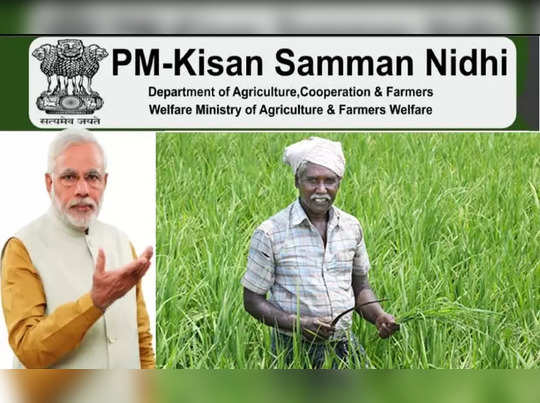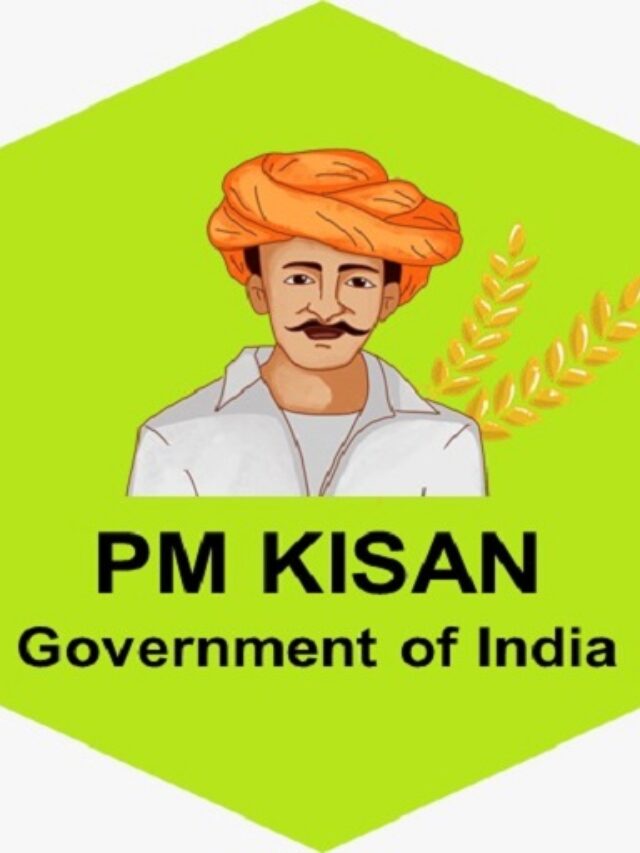
India, often referred to as an agrarian nation, heavily relies on its agricultural sector for sustenance and economic growth. To support the backbone of the nation – the farmers – the government introduced the Pradhan Mantri Kisan Samman Nidhi (PM-Kisan) scheme | पीएम किसान योजना . In this in-depth exploration, we will unravel the intricacies of the PM Kisan Yojana, from its historical roots to its future prospects.
I. Introduction
A. Overview of PM Kisan Yojana | पीएम किसान योजना
The PM Kisan Yojana, launched in December 2018, stands as a testament to the government’s commitment to India’s farming community. It’s a bold step toward improving the financial stability of farmers across the nation. The scheme offers direct income support, a lifeline for millions who till the soil to feed the nation.
B. Importance of the Scheme
The significance of PM Kisan transcends its financial aid. It symbolizes the government’s recognition of the pivotal role farmers play in the country’s progress. This support not only eases the economic burden but also signifies empowerment and respect for the farming community.
II. Historical Background
A. Inception of PM Kisan
The idea for PM Kisan was conceived to address the longstanding issues faced by Indian farmers, including fluctuating crop prices, debt burden, and inadequate financial security. The scheme took shape under the leadership of the Prime Minister, and aimed at transforming the lives of farmers.
B. Evolution of the Scheme
Since its inception, PM Kisan has undergone significant evolution. Amendments and improvements have been made to streamline the distribution process, ensure inclusivity, and boost the overall impact on agriculture and rural development.
C. Significance in Indian Agriculture
PM Kisan plays a crucial role in addressing the challenges Indian agriculture faces today. It serves as a ray of hope for farmers grappling with financial instability, offering them a steady source of income.

III. Eligibility Criteria of PM Kisan Yojana | पीएम किसान योजना
A. Definition of Beneficiary Farmers
To qualify as a beneficiary under PM Kisan, a farmer must own cultivable land. This definition ensures that the benefits reach those who rely on agriculture for their livelihood.
B. Land Ownership and Cultivation
Farmers must provide proof of land ownership and evidence of cultivation on the land. These criteria ensure that the support goes to those actively engaged in farming.
C. Income Criteria
The income criteria are essential to determine the eligibility of farmers for the scheme. The government sets specific income limits to target small and marginal farmers.
IV. Registration Process of PM Kisan Yojana | पीएम किसान योजना
A. Online Registration
Registering for PM Kisan has been made easy with an online portal. Farmers can visit the official website and follow a simple process to enroll. This convenience ensures that more farmers can benefit from the scheme.
B. Offline Registration
For those who may not have access to the internet, offline registration options are available. Farmers can visit designated centers and complete the registration process.
C. Aadhar Card Linkage
Linking Aadhar cards to PM Kisan accounts is a critical step. It helps in verifying the identity of beneficiaries and ensures the funds reach the right hands.
V. Fund Disbursement
A. Frequency of Installments
The PM Kisan scheme disburses funds in three equal installments every year. These regular payments provide financial stability throughout the year.
B. Direct Benefit Transfer (DBT)
The scheme adopts a Direct Benefit Transfer (DBT) mechanism, ensuring that funds are directly transferred to the bank accounts of beneficiaries. This approach minimizes leakage and ensures transparency.
C. Bank Account Requirements
To receive funds, farmers need to have a bank account. The account should be linked to their PM Kisan registration. This requirement streamlines the disbursement process.
VI. Financial Benefits
A. Amount Disbursed
Under PM Kisan, eligible farmers receive ₹6,000 annually in three equal installments. This financial aid serves as a safety net during challenging times.
B. Impact on Farmers
The impact of PM Kisan on farmers’ lives is profound. It provides them with the financial means to invest in their farms, purchase quality seeds, and adopt modern farming practices.
C. Empowering Rural India
By supporting farmers, PM Kisan contributes to rural development and economic growth. Empowered farmers can contribute more to their communities and the nation’s progress.
VII. Role of Government
A. Initiating Agency
The government of India is the driving force behind PM Kisan. It takes on the role of the initiating agency, demonstrating its commitment to the welfare of farmers.
B. Funding and Budget Allocation
A significant portion of the national budget is allocated to PM Kisan, highlighting the government’s financial commitment to the scheme.
C. Government’s Commitment to Farmers
PM Kisan is just one of the many initiatives the government has undertaken to support farmers. Its dedication to improving farmers’ lives is evident in various policies and programs.
VIII. PM Kisan Portal | pmkisan.gov.in
A. Accessing Information
The official PM Kisan portal serves as an information hub for farmers. It provides essential details about the scheme, registration guidelines, and beneficiary status checking.
B. Checking Beneficiary Status पीएम किसान योजना
Farmers can easily check their beneficiary status on the portal. Keeping records updated ensures that they receive their rightful benefits.
- Visit the PM Kisan Portal: Start by accessing the official PM Kisan portal. You can do this by visiting the official website of PM Kisan Yojana (https://pmkisan.gov.in/).
- Navigate to “Farmers Corner”: On the homepage, you’ll find a section called “Farmers Corner.” Click on it to access various services for farmers.
- Click on “Beneficiary List”: Under the “Farmers Corner” section, you’ll see an option called “Beneficiary List.” Click on it to proceed.
- Select Your State: You will be directed to a new page where you need to select your state. Click on the drop-down menu and choose your respective state from the list provided.
- Select Your District and Sub-District (Tehsil): After selecting your state, another drop-down menu will appear. Choose your district and sub-district (tehsil) from the options available.
- Enter Your Village and Block Name: In this step, you’ll need to enter your village and block name. Make sure to select the correct village and block from the provided list.
- Search by Aadhar Number or Account Number: You have two options to search for your name on the PM Kisan Beneficiary List:
- Aadhar Number: Enter your Aadhar number in the designated field.
- Account Number: Alternatively, you can enter your bank account number.
- Click “Get Data”: After entering the required information, click on the “Get Data” button. The portal will search for your name on the beneficiary list.
- View Your Status: If your name is on the list, the portal will display your beneficiary status, including your name, Aadhar number, and the installment details.
C. Grievance Redressal
For addressing complaints and grievances, PM Kisan has a robust mechanism in place. Farmers can seek assistance through the portal, ensuring their concerns are heard and resolved.
How to Register for PM kisan yojana 15th installment?
- Check Eligibility: Ensure that you meet the eligibility criteria for the PM Kisan Yojana, which includes owning cultivable land and meeting income criteria. Your eligibility status can be verified on the official PM Kisan portal.
- Gather Required Documents: Collect essential documents such as your Aadhar card, bank account details, and land ownership documents. These documents will be required during the registration process.
- Visit the PM Kisan Portal: Access the official PM Kisan portal by going to https://pmkisan.gov.in/.
- Navigate to the “Farmers Corner”: On the homepage, find the “Farmers Corner” section and click on it. This section provides various services for farmers.
- Click on “New Farmer Registration”: Under the “Farmers Corner” section, you will typically find an option for “New Farmer Registration.” Click on it to initiate the registration process.
- Provide Aadhar Number: You will be prompted to enter your Aadhar number. Ensure that the Aadhar number you provide is linked to your bank account for direct benefit transfer (DBT).
- Enter the Captcha Code: Enter the captcha code as shown on the screen for verification purposes.
- Click on “Continue”: After entering your Aadhar number and the captcha code, click on the “Continue” button to proceed.
- Complete the Registration Form: Fill out the registration form with accurate details. This form will typically include information about your name, gender, date of birth, bank account details, and land ownership details.
- Verify and Submit: Review the information you’ve entered to ensure its accuracy. Once you’re certain that all details are correct, submit the registration form.
- Acknowledgment Receipt: After successful registration, you should receive an acknowledgment receipt or reference number. Make sure to keep this receipt safe for future reference.
- Wait for Verification: Your registration details will be verified by the authorities. This may take some time, so be patient.
- Check Beneficiary Status: Periodically check the beneficiary status on the PM Kisan portal to confirm whether you’ve been approved for the 15th installment.
PM Kisan yojana 15th Installment date
The 14th installment of the PM Kisan Samman Nidhi Yojana was recently disbursed on July 27, 2023, and it found its way into the bank accounts of approximately 8.5 crore registered farmers. Looking ahead, the eagerly anticipated 15th installment is scheduled for crediting by November 2023. The responsible authority for the distribution of the PM Kisan 15th Instalment for the period spanning August to November is the Department of Agriculture and Farmers Welfare.
